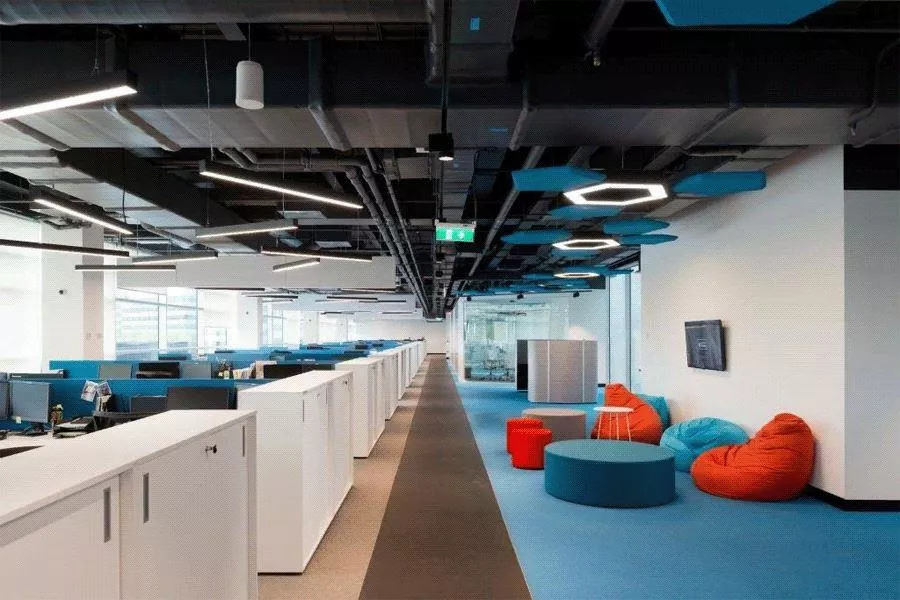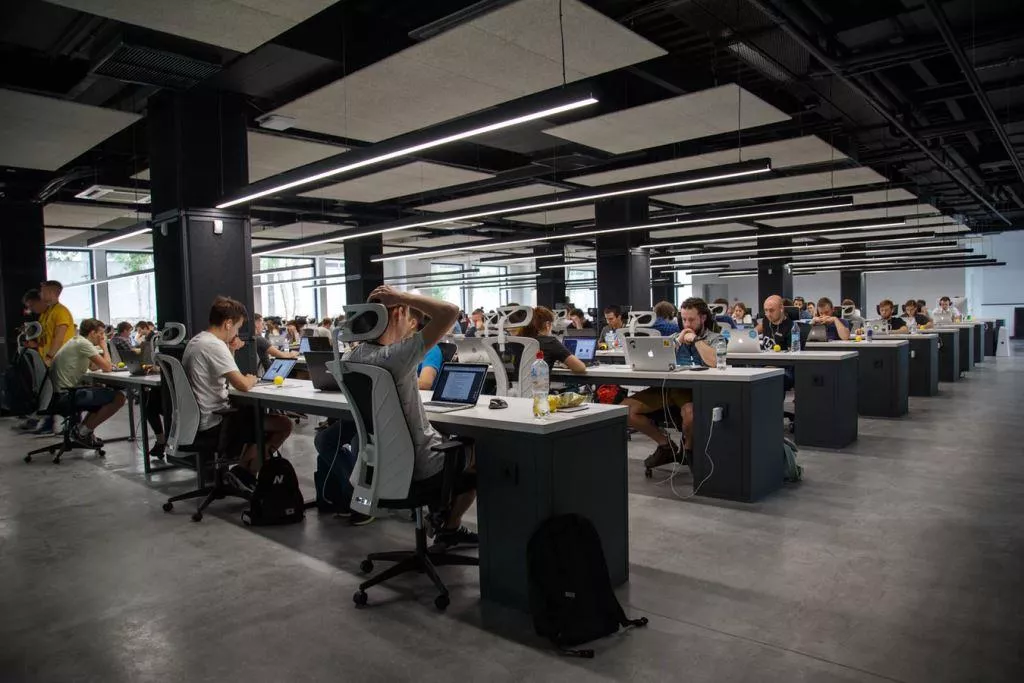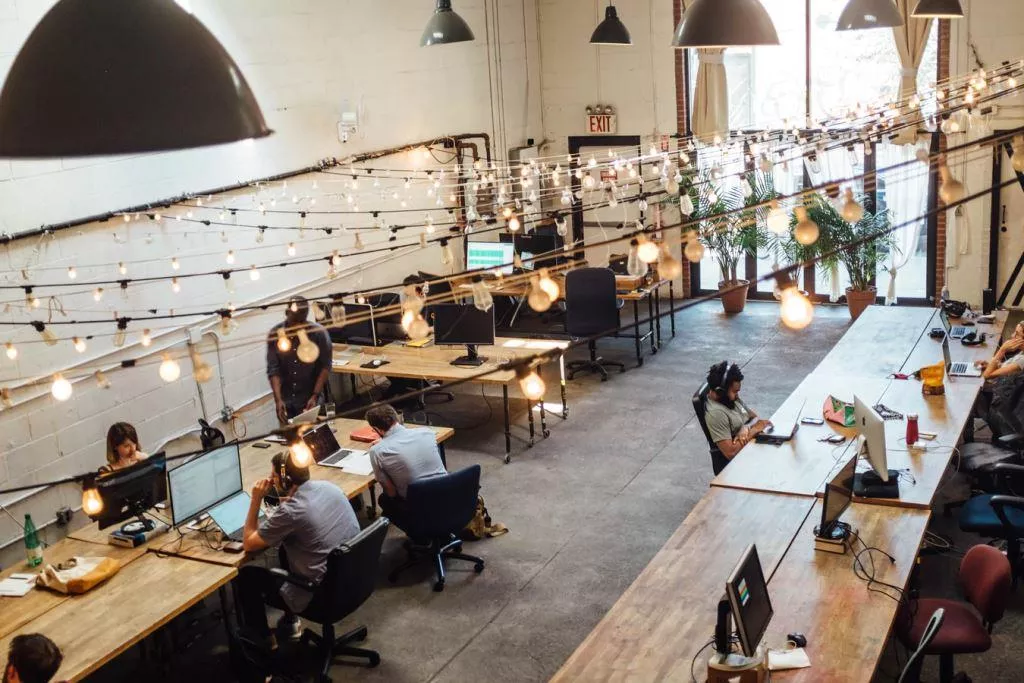Open space as a battlefield
Open space is an open space office. Such a space is organized in the following ways: on the principle of working groups, where employees of one working link are not divided among themselves, but separated from other colleagues; on the principle of joint work, that is, without distinctions at all or separated by partitions between tables; according to the principle of a shared desk (translated as “common table”), where even a table is not assigned to an employee, and when he comes to work, he sits down at a free one.
Such an organization of the workspace is designed to solve a number of problems at once:
Rent price

An open office allows you to use the space as rationally as possible, and organizing such a space is cheaper. According to IWG research, 64% of Russian companies use flexible office space to optimize costs.
For this reason, today most of the major companies (Yandex, Mail.ru Group, Rostelecom, etc.) prefer open space to corridor-office type offices.
Employee productivity
It is easier for an employee to focus on their own tasks when there is an atmosphere of continuous work around. Colleagues who are already busy in this case act as a motivator.
Interaction between colleagues
Most of the working time is spent by people in the same space, and, as a result, employees solve work issues on the spot, often without even getting up from their chair. And close work contact leads to better personal relationships, which will only increase the level of productivity in the workplace.
The above points solve 3 serious office problems at once: they sorted out the red tape, made friends with the employees, and even paid several times less for this pleasure! Capitalist paradise, nothing else.
But the devil, as you know, lies in the details. And the details here are significant: all people are different. For example, constant interaction with colleagues will cause enthusiasm in a sanguine extrovert, and irritation in a melancholic introvert and, as a result, a decrease in productivity. One thought of constant conversations will make the latter hide under the shared desk allocated for today.

It turns out that two employees occupying the same position and with equal working potential, after all, do not fit the same working conditions. And where there is infringement of needs, there is conflict. It doesn’t really matter if it’s internal or external, because he will show up at work anyway, and then the calm office world will turn into a Game of Thrones, which is the opposite of the manager’s original goals.
Obviously, the example discussed above is an exaggeration, but natural and seemingly insignificant everyday issues will lead to the same undesirable result as a fundamental disagreement.
What can an employer do to prevent this from happening? Oddly enough, everything is simple – listen to subordinates and provide at least basic amenities before starting work in an open space office, such as:
Temperature conditions
Where one is hot, the other is cold. Therefore, the ventilation system must be debugged in such a way as to work according to the average.
Background noise
Many people working in the same space create noise throughout the entire workflow. Even if they are silent. The clatter of a keyboard, the click of a mouse, the creak of a pencil—there is always a source, especially if everyone around is doing something. And it distracts from complex work tasks that require internal concentration.
Remove all sources of noise will not work, and there is no need. It is enough to organize for each employee the opportunity to independently isolate themselves from the irritant. For example, using noise-canceling headphones.
Rules of Conduct
One employee likes a bright perfume smell, and the other is allergic. It is impossible to determine who is who in advance, but it is possible to discuss with employees the need to treat each other with understanding and talk about the meaning of personal and other people’s space.
Dining area
The manager should organize a separate dining area so that employees can have a quiet snack during a break, without distracting colleagues with the smell of homemade chicken or fried fish.
Additional breaks
Even people who are comfortable in an atmosphere of close contact need time to be alone with themselves and calm their nerves. Therefore, it makes sense to add two 15-minute breaks to the working day.
At first glance, this looks like a venture that promises losses, but in fact only a calm and happy employee can work productively. It is better to sacrifice thirty minutes a day and win a number of new projects than to spare time for rest and lose not only future, but also current work in a sea of errors.
Personal comfort

Let employees organize the space on the tables themselves (except when the comfort of some will threaten the comfort of others, as in the case of perfumes and allergies): let them bring nice office supplies, decorate the workplace with photos of relatives or memes from the Internet – no matter how they will do it, the main thing is that they have the opportunity to create a cozy environment.
If the office is organized on the principle of a shared desk, let the employee bring things that will improve comfort conditions while working. With the condition that the employee return the space to its original form by the end of the day.
The implementation of these recommendations does not guarantee the complete absence of conflicts in the office, but it definitely minimizes the number of negative situations. Private issues, of course, will have to be resolved privately, but the less each individual employee has reasons for discomfort, the less likely there is an open conflict between him and a colleague. Therefore, it is better to resolve everyday issues even before the applicant has signed the contract.
The main thing in the context of office conflicts is to remember that we are all different. Everyone has their own needs and needs, and it is necessary to take this into account in the process of organizing the workspace. Indeed, otherwise, the cherished productivity that the employer strives for will only decrease.
